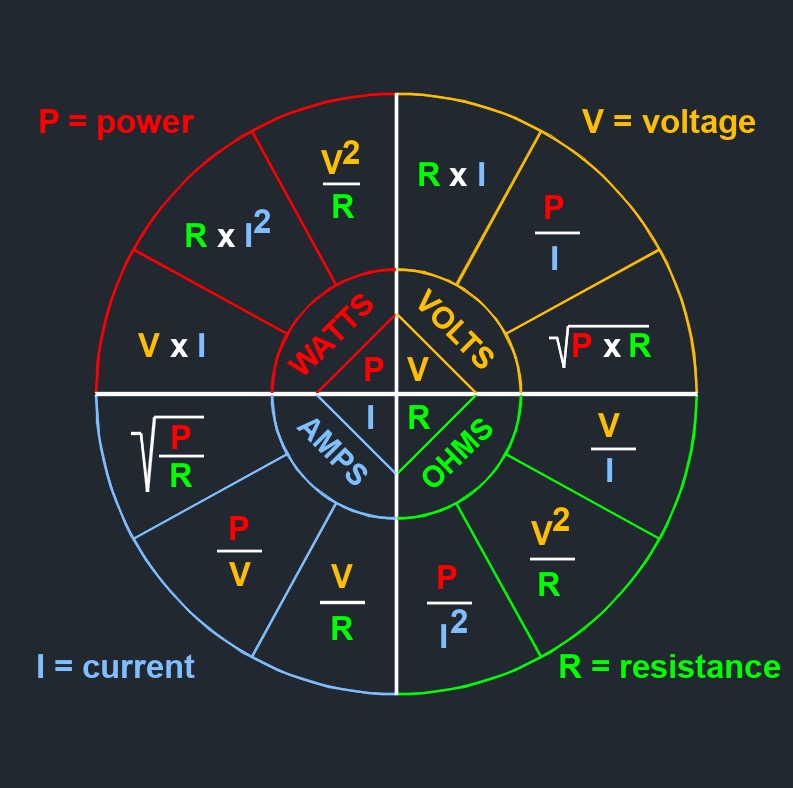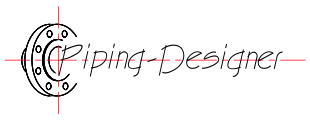Electric Voltage
Electric Voltage Formula |
||
|
\( V \;=\; I \cdot R \) (Electric Voltage) \( I \;=\; \dfrac{ V }{ R }\) \( R \;=\ \dfrac{ V }{ I }\) |
||
| Symbol | English | Metric |
| \( V \) = voltage | \(V\) | \(V\) |
| \( I \) = current | \(A\) | \(A\) |
| \( R \) = resistance | \(\Omega\) | \(\Omega\) |
 Electric voltage V or E, also known as electric potential difference, is the measure of the electric potential energy per unit charge that is required to move a charge from one point to another in an electric field. A unit of electrical pressure. One volt is the amount of pressure that will cause one ampere of current in one ohm of resistance.
Electric voltage V or E, also known as electric potential difference, is the measure of the electric potential energy per unit charge that is required to move a charge from one point to another in an electric field. A unit of electrical pressure. One volt is the amount of pressure that will cause one ampere of current in one ohm of resistance.
Electric Voltage Formula |
||
|
\( V \;=\; \dfrac{ P }{ I }\) (Electric Voltage) \( P \;=\; V \cdot I \) \( I \;=\; \dfrac{ P }{ V }\) |
||
| Symbol | English | Metric |
| \( V \) = voltage | \(V\) | \(V\) |
| \( I \) = current | \(A\) | \(A\) |
| \( P \) = power | \(P\) | \(P\) |
 In simple terms, voltage is the force that drives the electric current through a conductor. It is similar to the pressure that drives water through a pipe. The greater the voltage, the more electric charge will flow through a circuit. Voltage can be calculated using Ohm's Law, which relates voltage, current, and resistance in an electrical circuit.
In simple terms, voltage is the force that drives the electric current through a conductor. It is similar to the pressure that drives water through a pipe. The greater the voltage, the more electric charge will flow through a circuit. Voltage can be calculated using Ohm's Law, which relates voltage, current, and resistance in an electrical circuit.

Electric Voltage Formula |
||
|
\( V \;=\; \sqrt{ P \cdot R } \) (Electric Voltage) \( P \;=\; \dfrac{ V^2 }{ R }\) \( R \;=\; \dfrac{ V^2 }{ P }\) |
||
| Symbol | English | Metric |
| \( V \) = voltage | \(V\) | \(V\) |
| \( P \) = power | \(P\) | \(P\) |
| \( R \) = resistance | \(\Omega\) | \(\Omega\) |

Voltage in Series Formula
|
||
| \( V_t \;=\; V_1 + V_2 + V_3 +\; ... \) | ||
| Symbol | English | Metric |
| \( V_t \) = voltage total source or drop | \(V\) | \(V\) |
| \( V_1, V_2, V_3 \) = voltage source or drop | \(V\) | \(V\) |
Voltage in Parallel Formula
|
||
| \( V_t \;=\; V_1 \;=\; V_2 \;=\; V_3 \;=\;\; ... \) | ||
| Symbol | English | Metric |
| \( V_t \) = voltage total source or drop | \(V\) | \(V\) |
| \( V_1, V_2, V_3 \) = voltage source or drop | \(V\) | \(V\) |
